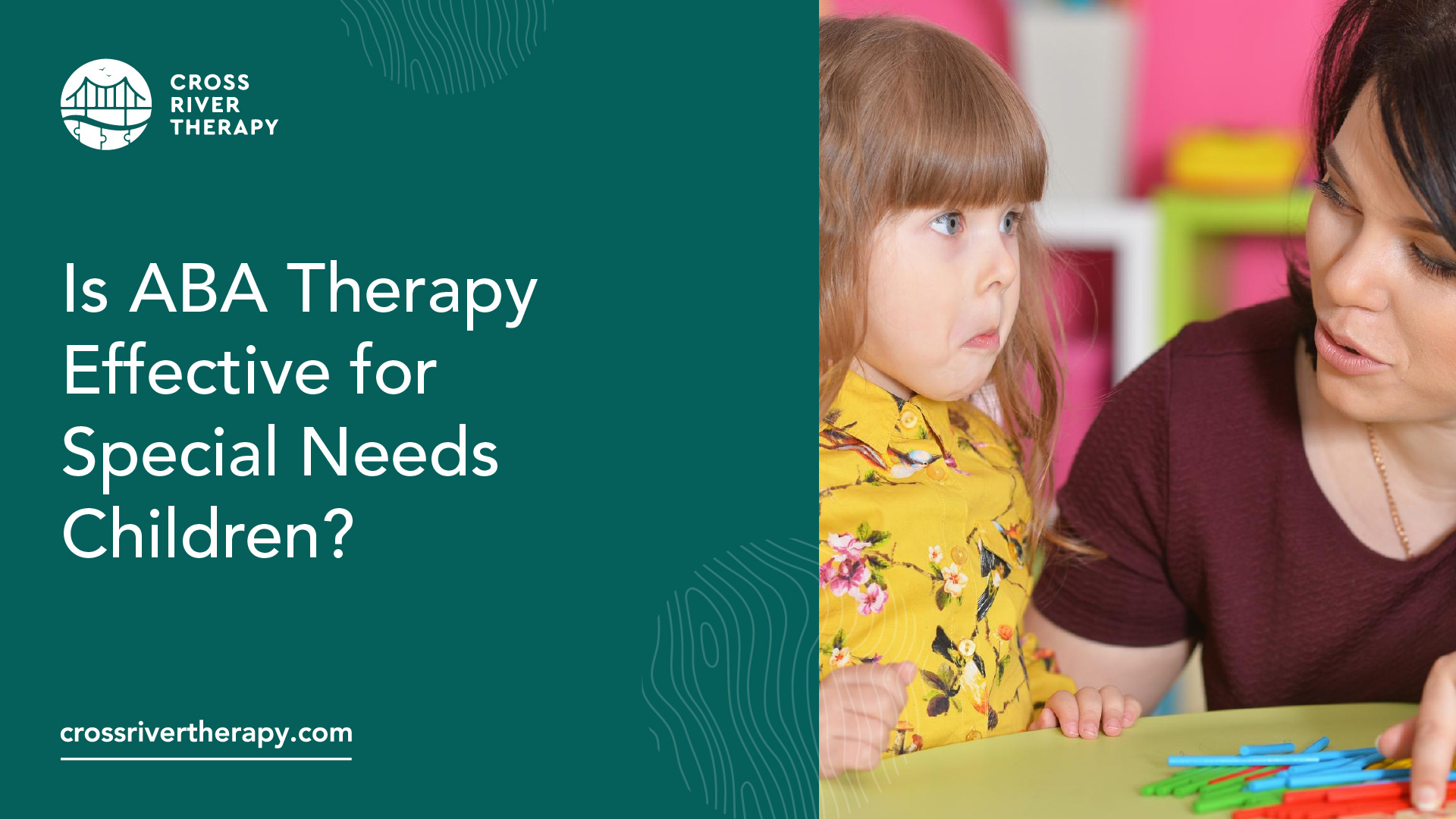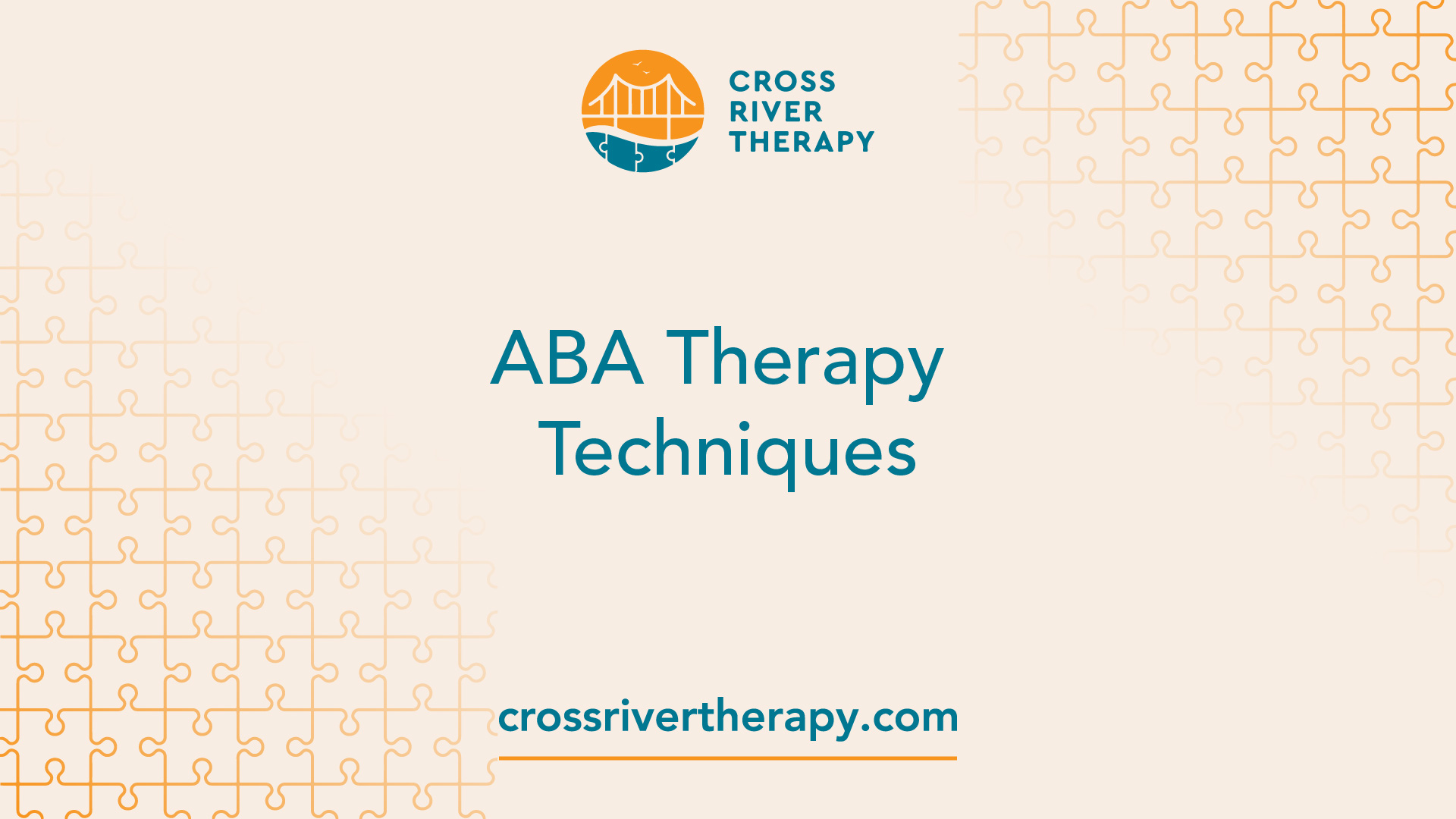Is ABA Therapy Effective for Special Needs Children?
Discover its effectiveness, benefits, and controversies in this informative guide.

Understanding ABA Therapy
ABA therapy, or Applied Behavior Analysis therapy, has been utilized to assist children with autism and related developmental disorders since the 1960s. This therapeutic approach has garnered attention for its effectiveness in improving outcomes for individuals with autism spectrum disorder. In this section, we will explore the history and effectiveness of ABA therapy, as well as the role of a BCBA (Board Certified Behavior Analyst) in its implementation.
History and Effectiveness
More than 20 studies have established the positive impact of intensive and long-term ABA therapy on children with autism. These studies have shown significant improvements in intellectual functioning, language development, daily living skills, and social functioning [1]. ABA therapy is considered an evidence-based best practice treatment by the US Surgeon General and the American Psychological Association [1].
The effectiveness of ABA therapy lies in its systematic approach to understanding and modifying behavior. It focuses on identifying the environmental factors that influence behavior and using positive reinforcement and other techniques to encourage desired behaviors while minimizing challenging behaviors. ABA therapy's success is attributed to its individualized nature, tailoring interventions to meet the specific needs of each individual.
Role of BCBA in ABA
A crucial component of ABA therapy is the involvement of a board-certified behavior analyst, commonly referred to as a BCBA. These professionals play a vital role in the design and implementation of ABA programs. The BCBA oversees the therapy process, working closely with the individual and their family to develop a program that considers their unique skills, needs, interests, preferences, and family situation.
The BCBA is responsible for conducting assessments, analyzing data, and creating individualized treatment plans. They collaborate with other professionals, such as registered behavior technicians (RBTs), to implement ABA interventions and ensure progress is being made towards the individual's goals.
By utilizing their expertise, the BCBA ensures that the ABA therapy program is effective and tailored to the specific needs of the individual. Their involvement provides a comprehensive and evidence-based approach to addressing the challenges faced by children with autism.
In the next sections, we will delve into the different techniques utilized in ABA therapy, the implementation process, controversies surrounding ABA, and the benefits and costs associated with full-time ABA therapy. Stay tuned to learn more about this impactful therapeutic approach.
ABA Therapy Techniques

ABA therapy utilizes various techniques to help children with special needs develop new skills and reduce challenging behaviors. In this section, we will explore three key techniques commonly employed in ABA therapy: Discrete Trial Training (DTT), Antecedent-based Interventions (ABI), and Extinction Procedures.
Discrete Trial Training (DTT)
Discrete Trial Training (DTT) is a fundamental teaching strategy in ABA therapy. It involves breaking down complex skills into smaller, distinct elements, making it easier for children to learn and practice. Each trial consists of a specific instruction or question, followed by a prompt to guide the child's response. Positive reinforcement is provided immediately after each correct response to reinforce the desired behavior.
By using DTT, therapists can systematically teach a range of skills, including academic, communication, social, and self-help skills. The structured nature of DTT allows for repetition and consistent practice, promoting skill acquisition and generalization.
Antecedent-based Interventions (ABI)
Antecedent-based Interventions (ABI) is another important technique used in ABA therapy. The focus of ABI is on modifying the environment to reduce the likelihood of triggering interfering behaviors. This may involve altering the antecedents, such as the setting, materials, or instructions, to create a more conducive learning environment for the child.
By modifying antecedents, therapists aim to minimize potential distractions or triggers that could lead to challenging behaviors. This allows the child to focus on the intended antecedent and engage in the desired behavior more effectively. ABI empowers children to respond positively to specific situations and promotes the development of appropriate skills.
Extinction Procedures
Extinction is a procedure used in ABA therapy to reduce problem behaviors. It involves withholding reinforcement for a previously reinforced behavior, teaching the child that the behavior no longer results in the desired outcome. By consistently ignoring or not reinforcing the problem behavior, the child learns that the behavior is ineffective in achieving their goal.
Extinction procedures are implemented carefully, with a focus on identifying and reinforcing alternative, more appropriate behaviors. By doing so, therapists help children replace problem behaviors with more adaptive and socially acceptable alternatives. Extinction procedures can effectively reduce challenging behaviors and improve overall behavior management.
By utilizing techniques such as DTT, ABI, and extinction procedures, ABA therapists can customize interventions to meet the specific needs of each child. These techniques provide structured and systematic approaches to skill development and behavior management, helping children with special needs make significant progress in various areas of their lives.
Implementing ABA Therapy
When it comes to implementing ABA therapy, several key components contribute to its effectiveness. These include the involvement of Registered Behavior Technicians (RBTs), active parent participation, and the development of individualized programs tailored to each child's needs.
Registered Behavior Technicians (RBTs)
ABA therapy involves therapists known as Registered Behavior Technicians (RBTs), who play a vital role in the implementation of ABA programs. These therapists are trained and supervised by Board-Certified Behavior Analysts (BCBAs) to work directly with individuals with autism, practicing skills and working towards individual goals. RBTs deliver interventions based on the specific strategies and techniques designed by the BCBA.
RBTs are responsible for implementing behavior plans, collecting data, and providing ongoing feedback to the BCBA. They work closely with the child to reinforce positive behaviors, teach new skills, and address challenging behaviors. The collaboration between RBTs, BCBAs, and other members of the therapy team is crucial for the success of ABA therapy.
Parent Involvement
A notable advantage of ABA therapy is the emphasis on training parents and caregivers. By equipping parents with the tools and techniques used in ABA, they become active participants in the therapeutic process, reinforcing learned behaviors and skills. This collaborative effort often leads to more sustainable and long-lasting positive outcomes for the child.
Parent involvement in ABA therapy can take various forms. Parents may participate in training sessions to learn ABA techniques and strategies that can be implemented at home. They can also observe therapy sessions and receive guidance from the therapy team on how to reinforce specific skills and behaviors outside of therapy sessions. The involvement of parents helps create a consistent and supportive environment for the child's progress.
Individualized Programs
One of the strengths of ABA therapy is its focus on individualization. ABA programs are designed by BCBAs, who customize them to each learner's skills, needs, interests, preferences, and family situation. Individualized programs ensure that the therapy aligns with the unique requirements of each child.
ABA programs typically involve setting specific goals and determining the steps required to achieve them. These goals can encompass various areas, such as communication, social skills, behavior management, and academic skills. The therapy team, including the BCBA and RBTs, collaborates with parents to establish these goals and create a plan tailored to the child's specific needs and abilities.
By developing individualized programs, ABA therapy can address the unique challenges and strengths of each child. It allows for a personalized approach that maximizes the child's potential for growth and development. Individualized programs may be adjusted as the child progresses, ensuring that the therapy remains effective and relevant to their evolving needs.
The involvement of RBTs, active parent participation, and the development of individualized programs are essential elements in the successful implementation of ABA therapy. By working together, therapists, parents, and caregivers can create a supportive and structured environment that promotes positive outcomes for children with special needs.
Controversies Surrounding ABA

Despite the widespread use and effectiveness of Applied Behavior Analysis (ABA) therapy for special needs children, there are some controversies surrounding its implementation. These controversies stem from criticisms and debates over the focus on behaviors versus skills in ABA therapy.
Criticisms and Support
One criticism of ABA therapy is rooted in the earlier versions of the therapy, which involved punishments along with rewards. It is important to note that these punishments are no longer used in modern ABA practices. Critics argue that ABA can be too repetitive and demanding on children. However, it is worth highlighting that modern ABA therapy is often less repetitive, and practitioners are trained to make learning enjoyable for the child. The focus is on positive reinforcement and creating a supportive and engaging environment for the child's development [4].
Supporters of ABA therapy highlight its effectiveness in helping children with special needs acquire important skills and reduce challenging behaviors. They emphasize that ABA is individualized and tailored to meet the unique needs of each child. ABA therapy can address a wide range of areas, including language development, emotional regulation, impulse control, social skills, and routine building, among others.
Focus on Behaviors vs. Skills
Another controversy surrounding ABA therapy is the criticism that it can be overly focused on eliminating behaviors rather than building skills. Some practitioners and critics argue that therapy should concentrate on what children should be doing rather than what they should not be doing. This perspective emphasizes the importance of developing new skills and promoting independence rather than solely targeting behavior reduction. It is important to strike a balance between addressing challenging behaviors and fostering skill development to ensure a holistic approach to therapy [6].
Defenders of ABA therapy emphasize that the therapy is not about changing how neurodiverse children think or feel, but rather helping them build on their strengths and participate in society as much as possible. ABA therapy focuses on enabling independence rather than eliminating neurodiversity. It aims to provide individuals with the skills and strategies necessary to navigate daily life and reach their full potential.
It is important to have open and informed discussions about these controversies surrounding ABA therapy. By understanding different perspectives and considering the individual needs of each child, parents and caregivers can make informed decisions about the most appropriate therapeutic approach for their child's development and well-being.
Benefits of Full-Time ABA
When it comes to ABA therapy for special needs children, the intensity and duration of the therapy play a crucial role in achieving positive outcomes. Full-time ABA therapy, provided between 20 and 40 hours per week, is considered most effective for children with autism who require more intensive intervention. Let's explore the benefits of full-time ABA therapy in more detail.
Intensity and Duration
Research has shown that higher intensity and longer durations of ABA therapy lead to greater outcomes in various areas of functioning. ABA therapy provided at 36 hours per week or more has been associated with improvements in IQ and adaptive skills. This higher intensity allows for more learning opportunities and immediate intervention when needed, helping children progress towards treatment goals.
The benefits of full-time ABA therapy have been observed across a wide age range, emphasizing the importance of accessing intervention as early as possible for children with autism. Positive outcomes have been observed not only in young children but also in older children and youth. This suggests that full-time ABA therapy can be beneficial regardless of age.
Outcomes and Effectiveness
Studies have shown that full-time ABA therapy has a positive impact on various areas of functioning. Improvements have been observed in academic skills, adaptive functioning, cognitive skills, executive functioning, language skills, motor skills, play, and social skills. These outcomes highlight the comprehensive nature of ABA therapy and its ability to address multiple domains of development and behavior.
It's important to note that the impact of ABA therapy on quality of life (QoL) was not measured in the studies analyzed. However, the positive outcomes observed across cognitive, language, social/communication, problem behavior, adaptive behavior, emotional, and autism symptoms domains indicate the overall effectiveness of ABA therapy.
In summary, full-time ABA therapy, provided at a higher intensity and for longer durations, offers more learning opportunities and immediate intervention when needed. This intensity and duration have been associated with positive outcomes in various areas of functioning, including academic skills, adaptive functioning, language skills, and social skills. For children with autism, accessing full-time ABA therapy can lead to significant improvements and better overall development.
ABA Impact and Cost
When considering ABA therapy for special needs children, it's important to understand the potential improvements and measures as well as the lifetime cost for families.
Improvements and Measures
Numerous studies have highlighted the positive impact of Applied Behavior Analysis (ABA) on children and youth with autism spectrum disorders (ASD). These studies have demonstrated improvements across various outcome measures, including cognitive abilities, language development, social and communication skills, reduction in problem behaviors, improvement in adaptive behaviors, emotional regulation, and reduction in autism symptoms [9].
For example, a meta-analysis conducted by Virués-Ortega (2010) revealed that ABA interventions implemented in early childhood, which were long-term and comprehensive, resulted in positive medium to large effects in areas such as language development, social functioning, intellectual functioning, and daily living skills acquisition for individuals diagnosed with ASD. These findings indicate the potential for significant improvements through ABA therapy.
However, it's important to note that not all studies measure the impact of ABA therapy on the quality of life (QoL) of individuals with ASD. This is an aspect that requires further research and evaluation.
Lifetime Cost for Families
The lifetime cost associated with raising a child diagnosed with ASD can be substantial. Studies have estimated that the lifetime cost for families with a member diagnosed with ASD can range from approximately US$1.4 million to US$2.4 million, depending on factors such as additional intellectual disabilities (ID) and the country of residence [9].
The increasing prevalence of ASD has created a growing need for effective and evidence-based interventions. ABA therapy, based on the principles of applied behavior analysis, is one of the most widely recognized evidence-based interventions for the treatment of ASD. It has shown positive outcomes in areas such as language development, social functioning, intellectual functioning, and daily living skills acquisition.
While the cost of ABA therapy may vary depending on various factors such as location, duration, and intensity of treatment, it is important for families to consider the potential long-term benefits when evaluating the cost. The positive impact and improvements observed through ABA therapy can contribute to the overall well-being and development of the child with ASD.
It is worth noting that there are resources and support available to families to help manage the cost of ABA therapy. Families should explore options such as health insurance coverage, government assistance programs, and local support networks to alleviate the financial burden associated with ABA therapy.
By understanding the potential improvements and measures achieved through ABA therapy and considering the lifetime cost for families, parents can make informed decisions regarding the best course of treatment for their special needs child. It is essential to consult with professionals and experts in the field to determine the most appropriate and effective interventions for the unique needs of the child with ASD.
References
[1]: https://www.autismspeaks.org/applied-behavior-analysis
[2]:
[3]: https://abacustherapies.com/understanding-aba-therapy-pros-and-cons-explained/
[4]: https://childmind.org/article/controversy-around-applied-behavior-analysis/



